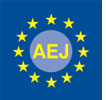
Research project – monitoring the content of local media in Bosnia and Herzegovina aims to gain scientific knowledge, based on empirical evidence, on whether and to what extent local media (print, electronic and online) represent the public interest, or fulfill their social role of local public media. It researched which topics are covered by local media, whether they research these topics through authorial texts or present them to the public based on the statements of local authorities and other social actors, how many sources they use in reporting and how they treat these sources (are they all equal or do they have preferences)? , and the extent to which pluralism of opinion is present in the content they publish.
In the first phase of the research (2020), 617 contents from 34 local media were monitored (4 print, 10 TV stations, 11 radio stations and 9 portals). The research findings indicated the following:
- Local media mainly deal with local politics, conveying the views of local officials and other political actors in the local community.
- Topics of public interest are present in the local media, but the way in which these topics are treated does not help citizens to get quality information on these topics.
- Local media mostly base their content on a small number of sources, ie interlocutors (usually one or possibly two).
- When the media have more interlocutors in their content, those interlocutors generally agree on the topic or issue being addressed and do not have conflicting opinions.
- The interlocutors in the stories are mostly equal, but there is not a small percentage of content in which the views of local officials, ie statements of local authorities, are transmitted indiscriminately, by copy-paste method. This gives the impression that local media almost feel a responsibility to convey what local officials want to say to the public.
- There are, of course, exceptions and positive examples of local media that are responsible and have a higher level of professionalism than others, but in general we can say that web portals are the worst in terms of pluralism of views and fulfillment of public interest.
On the basis of research findings, recommendations for the media were created, which relate, above all, to more research stories on topics related to public interest (local infrastructure, education, health, ecology, culture), and less transmission of local officials’ views on daily political issues. , and the provision of a larger number of authorial contents in the media based on a large number of sources, in which different points of view will be presented, ie a pluralism of opinions will be ensured.
In the second phase of the research (2021), 331 contents from 20 local media were monitored (3 print, 7 TV stations, 7 radio stations and 3 portals). The research findings indicated the following:
- In the second phase, local media mainly deal with local politics, conveying the views of local officials and other political actors in the local community. Another topic they deal with is health (which is a change compared to 2020), but it is mainly about transferring the number of sick, vaccinated and dead from COVID-19, and less about the actual dealing with public health topics.
- The second phase of the research also showed that there are topics of public interest in the local media, but the way in which these topics are treated does not help citizens to get quality information on these topics.
- This phase of the research also showed that there is a very small number of contents with three or more interlocutors, so we can confirm the thesis from the first phase of the research that local media mostly base their contents on a small number of sources (ie one or possibly two).
- When the media have more interlocutors in their content, those interlocutors mostly agree on the topic or issue being addressed and do not have conflicting opinions, which was the case in the second phase of the research.
- The interlocutors in the stories are mostly equal, and this is a certain improvement in the second phase of the research compared to the first phase of the research.
By longitudinal analysis or comparison of two monitors, we can conclude the following:
- Unfortunately, the local media failed to put the public interest in the forefront, as there was even a reduction in the percentage of topics of public interest.
- More attention is not paid to the topics of education, culture, health and environmental protection, but more attention is paid to health topics, mainly due to the pandemic. However, here, too, it is more a matter of superficial coverage of the pandemic, than of essentially high-quality reporting that would satisfy the information needs of citizens and help them orient themselves better in the society in which they live. Therefore, we can say that it did not happen that thematic, research stories are done when treating certain topics, and not just “covering” daily events.
- In the stories, a slightly larger number of interlocutors was taken than in the first phase of the research, but due to the fact that interlocutors who have different or different opinions were not selected, nor were these opinions confronted in public, we can say that this recommendation is not in fully implemented, as well as the recommendation to ensure a plurality of opinions, in such a way that journalists will not a priori create an attitude and approach to a topic they are reporting on, and in this pre-defined position “steal” the views of interlocutors, but will consult different interlocutors objectively present their arguments.
- The copy-paste method is still present as the dominant approach of local media.
The research was created within the project “Free Media for Free Society”, implemented by the BH Journalists Association in cooperation with the Association of Electronic Media in BiH (AEM BiH), with the financial support of the European Union.
Research is available here.



